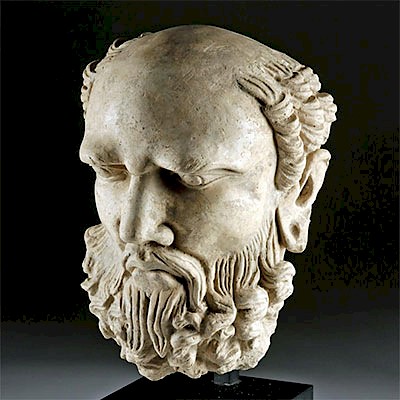Gandharan Schist Relief - Procession to Buddha Stupa
Lot 163
About Seller
Artemis Fine Arts
686 S Taylor Ave, Ste 106
Louisville, CO 80027
United States
Selling antiquities, ancient and ethnographic art online since 1993, Artemis Gallery specializes in Classical Antiquities (Egyptian, Greek, Roman, Near Eastern), Asian, Pre-Columbian, African / Tribal / Oceanographic art. Our extensive inventory includes pottery, stone, metal, wood, glass and textil...Read more
Categories
Estimate:
$2,500 - $3,500
Absentee vs Live bid
Two ways to bid:
- Leave a max absentee bid and the platform will bid on your behalf up to your maximum bid during the live auction.
- Bid live during the auction and your bids will be submitted real-time to the auctioneer.
Bid Increments
| Price | Bid Increment |
|---|---|
| $0 | $25 |
| $300 | $50 |
| $1,000 | $100 |
| $2,000 | $250 |
| $5,000 | $500 |
| $10,000 | $1,000 |
| $20,000 | $2,500 |
| $50,000 | $5,000 |
| $100,000 | $10,000 |
| $200,000 | $20,000 |
About Auction
By Artemis Fine Arts
Jan 16, 2020
Set Reminder
2020-01-16 10:00:00
2020-01-16 10:00:00
America/New_York
Bidsquare
Bidsquare : Ancient | Asian | Ethnographic
https://www.bidsquare.com/auctions/artemis-gallery/ancient-asian-ethnographic-4799
Featuring classical antiquities, ancient and ethnographic art from cultures encompassing the globe. Artemis Fine Arts info@artemisgallery.com
Featuring classical antiquities, ancient and ethnographic art from cultures encompassing the globe. Artemis Fine Arts info@artemisgallery.com
- Lot Description
Central Asia, Pakistan, Swat Valley, Gandharan Empire, ca. 300 to 500 CE. A finely-carved grey schist relief depicting a procession to venerate the remains of Lord Buddha contained inside a stupa (Sanskrit for heap - after its form) illustrated in three vignettes separated by classical columns. All is finely carved in low to high relief. The earliest Buddhist stupas housed Buddha's ashes; hence the stupa (as depicted in the leftmost panel of this relief) was associated with the venerable Buddha and the path to Enlightenment in addition to a mountain and the universe. By adding Buddha's ashes to the stupa, the stupa embodied the energy of the Enlightened One. Buddha's ashes were buried in stupas erected in locations that were associated with significant events in Buddha’s life. These included Lumbini (his birthplace), Bodh Gaya (where Buddha achieved Enlightenment), Deer Park at Sarnath (where Buddha preached his first sermon on the Four Noble Truths (dharma or the law), and Kushingara (the site of his death). Size: 17.5" W x 3.625" H (44.4 cm x 9.2 cm); 5.125" H (13 cm) on included custom stand.
The Gandharan Empire made itself wealthy in part by controlling lucrative trade along the mountain passes between China in the East and the Near East and Mediterranean in the West; a great deal of this wealth went into local patronage of artisans and art. In the first century CE, Buddhism became fashionable amongst Gandharan elites, and the art produced at this time depicting the Buddha are some of the most striking Buddhist images from the past. Their artistic tradition also reflects the conquest of Alexander the Great and the introduction of styles from all sides, blended into a uniquely Gandharan tradition, which this Buddha exemplifies. Alexander the Great conquered Gandhara in 330 BCE and with the help of the Indo-Greek kings introduced classical traditions that would influence Gandharan art for the following seven centuries.
Provenance: private Hawaii, USA collection; ex Spinks Collection, London, UK; ex Earl Stendahl Collection, Los Angeles, California, USA, collected 1950-1960
All items legal to buy/sell under U.S. Statute covering cultural patrimony Code 2600, CHAPTER 14, and are guaranteed to be as described or your money back.
A Certificate of Authenticity will accompany all winning bids.
We ship worldwide and handle all shipping in-house for your convenience.
#150933A section from a relief. Uncarved on the verso. Losses to peripheries, a few of the devotees' faces as shown and other high-pointed areas. Normal surface wear, but many details are still strong. Deposits grace the surface.Condition
- Shipping Info
-
All shipping is handled in-house for your convenience. Your invoice from Artemis Gallery will include shipping calculation instructions. If in doubt, please inquire BEFORE bidding for estimated shipping costs for individual items.
-
- Buyer's Premium



 EUR
EUR CAD
CAD AUD
AUD GBP
GBP MXN
MXN HKD
HKD CNY
CNY MYR
MYR SEK
SEK SGD
SGD CHF
CHF THB
THB














